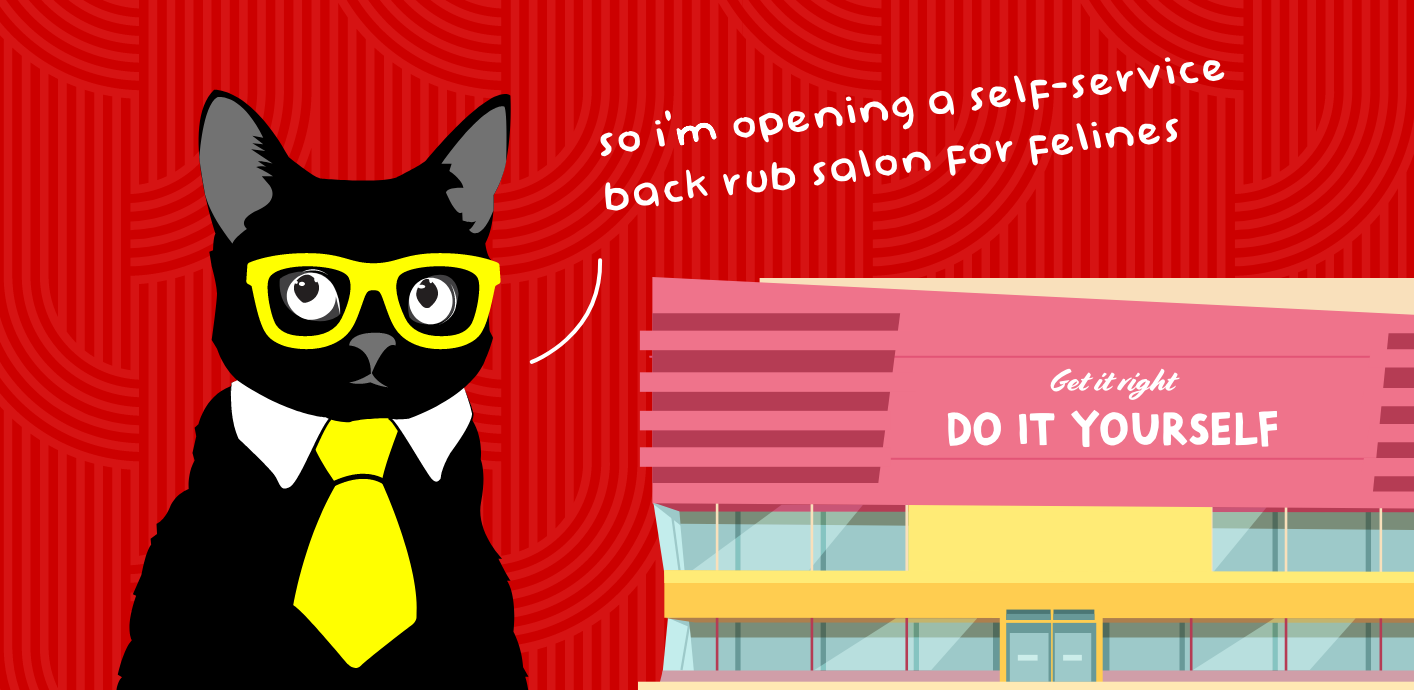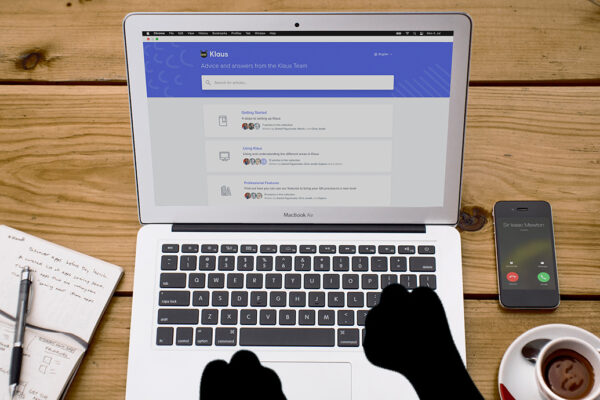What is omnichannel customer service?
Omnichannel customer service means offering consistent, good support across the channels. These include email, phone, text messages, live chat, social media, and even in-person assistance.
Offering support across the channels is not exactly a new concept — 42% of businesses offer two or more support streams. Phone and email are still the most popular, but video and social media are climbing in the ranks.
✨ Most popular support channels
- 28.1% of companies primarily use Email
- 22.9% of companies primarily use Phone
- 14.4% of companies primarily use Social Media
- 13.2% of companies primarily use Chat
- 11.3% of companies primarily use Video
- 10.2% of companies primarily use SMS
There’s one thing to mention, though. Offering a few contact options doesn’t really equal having an omnichannel customer service strategy. When many companies say they provide an “omnichannel” customer experience, they often just mean “multichannel.”
Multichannel customer service is about being wherever your customers are. It means offering various ways for customers to reach out, like chat, phone, or mass SMS texting. But these different channels might not be linked. So, in a full multichannel customer experience, a customer could talk to support through chat or phone, but they can’t carry the conversation from one to the other.
On the other hand, omnichannel customer support takes it up a notch by providing a smooth customer journey, no matter how they reach out. In an omnichannel experience, the customer’s history and context go with them, from one customer service channel to another. This allows support agents to offer better, more personalized help because they understand the whole story.
![]()
Why should you provide omnichannel customer service?
Excellent customer service cannot just exist on one platform anymore. It’s a growing trend that’s developing hand in hand with other changes toward more customer-centric and purrr-sonal support experiences.
There are lots of things that can sway how customers behave, but when it comes to the customer service channels they like the best, it turns out that age is the biggest game changer. Now, it’s not right to draw a strict age line, but the young folks, the millennials and Gen Z, are really pushing for omnichannel support.
If you’re not meeting their expectations, you might as well offer poor customer service at this point.

With omnichannel support, customer service interactions may start on one channel and fluidly move to another without having to start from scratch. By doing this, you can match the different likes and needs of your customers, making sure they always feel listened to and helped. Doing this makes customers happier, more loyal, and it’s better for your business in the long run.
Let’s sum it up, then.
Why should companies like yours provide omnichannel customer service?
- Customers expect seamless service across multiple channels. Take online shopping, for example. Your customers might browse products on a website, ask questions via live chat, and then make a purchase through a mobile app. Your ability to provide consistent and integrated service across all these platforms improves the customer experience.
- A seamless omnichannel approach increases customer satisfaction. It eliminates potential frustration from having to repeat information when switching between communication methods. Customers appreciate having their history and preferences remembered and acknowledged, leading to higher satisfaction levels and, consequently, increased customer loyalty.
- Offering omnichannel customer service can provide a competitive edge. It shows that your business is customer-focused and adaptable to the ever-changing digital landscape, which can help you attract new customers and retain existing ones. So far, over 40% of customer service leaders treat multichannel, omnichannel & dynamic channels as top priorities.
A unified support system also means that you can gather a more comprehensive picture of customer behavior and preferences. This rich set of customer data can be used to drive analytics and insights for a more targeted and effective omnichannel customer service strategy.
However, one of the key aspects of providing omnichannel customer service (and tracking the customer data) is ensuring that your support team has access to a unified system that tracks customer interactions across all channels. This allows your team to see all of a customer’s interactions, no matter where they happened.
It’s not the only challenge when implementing an omnichannel customer service strategy, though.

Are there any challenges when going for omnichannel customer service?
As great as omnichannel customer service can be, there can be a few challenges when implementing it as well:
- Costs: Setting up an omnichannel customer service strategy can be costly. You might need to buy new software, set up integrations, train your support team, or hire more people.
- Human resources: Your team might need to learn how to use new tools or how to communicate with customers using new channels. This can take time and might slow things down at first.
- Data & insights: Connecting all the different channels together can be a big task. Different systems might not work well together, or information might get lost between channels. You’ll need a good system to keep everything organized and safe.
- Customer expectations: When you offer omnichannel support, customers might expect instant response times, all the time. This can put pressure on your customer service reps and might not always be possible.
- Support quality: According to many CX professionals, there’s one thing that defines the quality of customer experience — consistency. When customers can reach out in so many ways, it can be tricky to keep the support consistent and high-quality across the channels.
✨ A brilliant tool for ensuring a high level of consistency in customer service is a QA program based on regular conversation reviews. Read more about customer service QA →
Remember, these challenges don’t mean that omnichannel customer service is a bad idea. It just means you’ll need to plan well and be prepared to handle these issues as they come up.

How to offer omnichannel customer service?
To provide the best omnichannel support possible, think about the following:
Choose the right channels
While it can be tempting to design your omnichannel support strategy based solely on internal needs and “gut feeling”, it’s crucial to prioritize understanding your customers and their unique preferences.
Find out where your customers like to communicate. Is it email? Social media? Phone calls? Do a bit of homework to learn what your customers prefer. Then, pick the best ways to talk to your customers based on their preferences.
Here’s a simple, yet great omnichannel customer support example from Surfer, a tool that helps with SEO & keyword optimization:
When using the live chat powered by Intercom, you also get notified about the agent’s response via email. Then, you can choose to continue the conversation there, or move back to the app and use the live chat.

No matter the exact channels, one thing is certain. By taking a customer-centric approach to omnichannel support, you can ensure that your customers receive the level of service they desire, wherever they need it.
Consider adding self-service options
Self-service resources, like knowledge bases, allow customers to find help instantly, saving time for both customers and customer service agents.
Omnichannel self-service means that customers can check guides, tutorials, and even user forums on the platform they prefer. Plus, they can switch between digital channels while accessing support documents. Chatbots on a company’s website or IVR (Interactive Voice Response) systems are great self-service tools too.
✨ Research shows that almost half of surveyed customers actually prefer to solve problems independently instead of reaching out for support.
Don’t forget that personal touch in customer service. Even though self-help options (including those assisted by AI) are useful, there might be times when customers, especially younger ones, would rather get help from an actual customer service agent.

Think about the customer service software
Once you have the communication channels covered, it’s time to manage them all in one place. There are many tools out there (often called “omnichannel platforms”) that can help you do just that. For example:
- Zendesk offers simple, yet powerful solutions that make it easy for customers to engage with your business — where and when it’s right for them. Every conversation stays connected, no matter where it happens (messaging, live chat, social, email, or voice).
- Freshdesk was built with omnichannel support in mind. Customer service agents can easily move between multiple channels, sort out customer requests, and keep a close eye on customer requests, no matter the support stream. Meanwhile, managers can pull together reports from all customer service platforms using just one, unified system.
- Hubspot Service Hub lets you reach out to customers on the platforms they like best, and see all their information in one place using a combined CRM system. No matter if it’s email, chat, or Facebook Messenger, your support team can easily move between the channels and resolve issues.

Train your team
Ultimately, the right omnichannel support software is one your team enjoys using regularly. And this can be different for different support teams.
At this point, you have to make sure your team knows how to use the software, and how to provide great service on each communication channel that you meow offer. This could mean different styles of communication — when comparing social media messages to emails, for example.

Offering omnichannel support might seem like a big job, but with the right plan, the right tools, and the right team on board, the task won’t seem that daunting anymore.
Omnichannel customer service explained
Embracing omnichannel customer service is not just about keeping up with the trends or meeting customers’ expectations. It’s a strategic business decision that can enhance customer satisfaction, improve customer loyalty, and drive business growth. While it might come with certain challenges, the long-term benefits clearly outweigh the short-term hurdles.
Like any significant business decision, success in omnichannel customer support requires meticulous planning, an in-depth understanding of your customers, and continuous learning and improvement. But remember, at the heart of this approach is the customer.
The integration of technology, self-service options, and that purrr–sonal touch will define your success in providing special offer omnichannel customer service. With the right mix, you can elevate your customer service to new heights and set your brand apart in an increasingly competitive marketplace.
Ultimately, the key to superior customer service in today’s digital age lies in providing consistent support, and a frictionless customer journey. Embrace omnichannel customer service, and you’ll be well on your way to providing excellent customer service, no matter where it happens.






